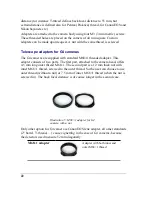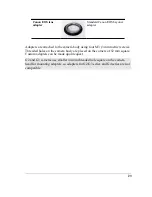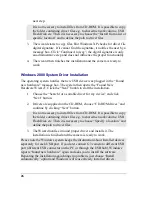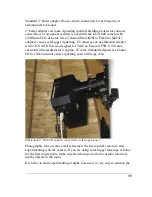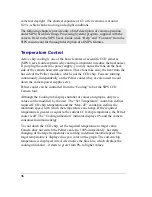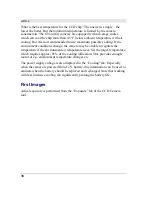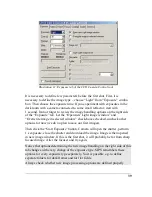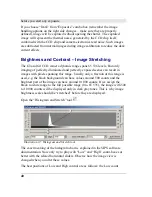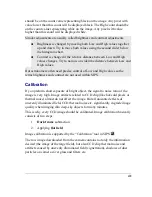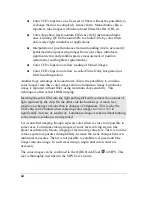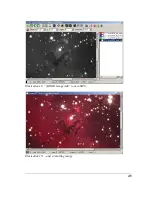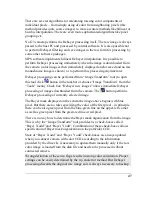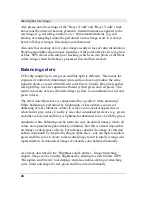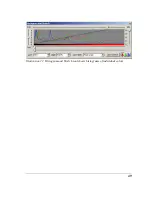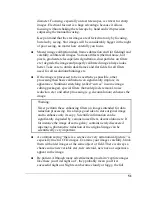
camera at daylight. The shortest exposure of G3 or G4 cameras is around
0.25 s, which can be too long at daylight conditions.
The following chapters provide only a brief description of camera operation
under SIPS (Scientific Image Processing System) program, supplied with the
camera. Refer to the SIPS User's Guide (click “Help” and “Contents” from the
SIPS main menu) for thorough description of all SIPS features.
Temperature Control
Active chip cooling is one of the basic features of scientific CCD cameras
(SIPS User's Guide explains why cooling is important to reduce thermal noise).
If you plug the camera to power supply, you may notice the fans on the back
side of the camera head start operation. These fans take away the heat from the
hot side of the Peltier modules, which cool the CCD chip. Fans are running
continuously, independently on the Peltier cooler (they are also used to cool
down the camera power supplies etc.).
Peltier cooler can be controlled from the “Cooling” tab of the SIPS CCD
Camera tool.
Although the Cooling tab displays number of values and graphs, only two
values can be modified by the user. The “Set Temperature” count-box defines
required CCD chip temperature and the “Max. dT” count-box defines the
maximum speed, with which the temperature can change. If the required
temperature is greater or equal to the current CCD chip temperature, the Peltier
cooler is off. The “Cooling utilization” indicator displays 0% and the camera
consumes minimum energy.
To cool down the CCD chip, set the required temperature to target value.
Camera does not switch the Peltier cooler to 100% immediately, but starts
changing of the target temperature according to defined maximal speed. The
target temperature is displayed in cyan color on the graph. The current chip
temperature is displayed in red. Also notice the blue line, which displays the
cooling utilization – it starts to grow from 0% to higher values.
36

